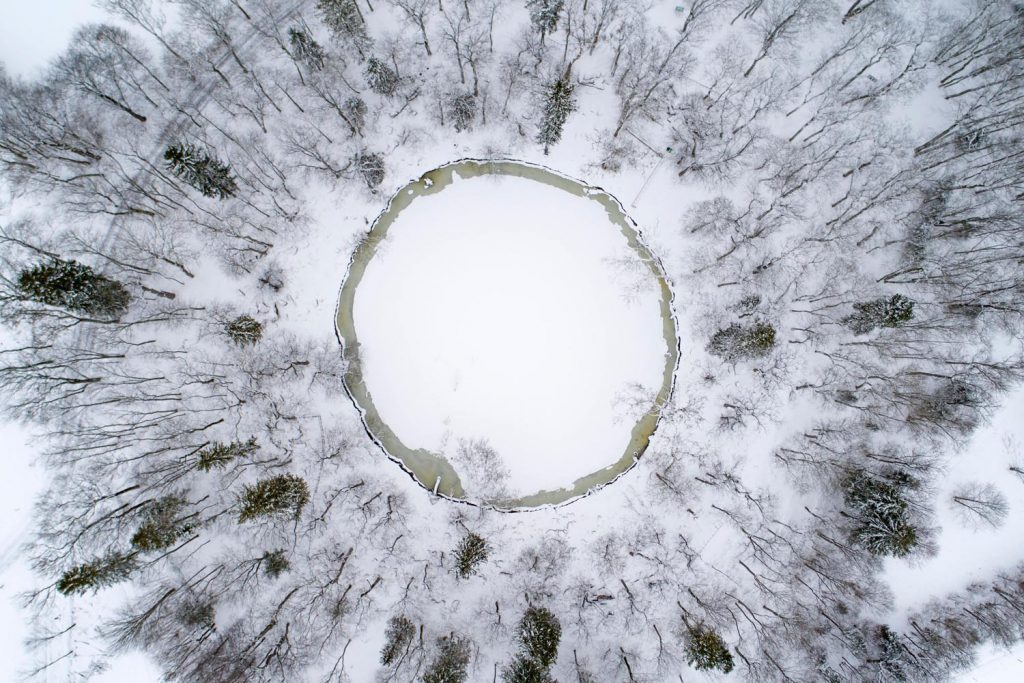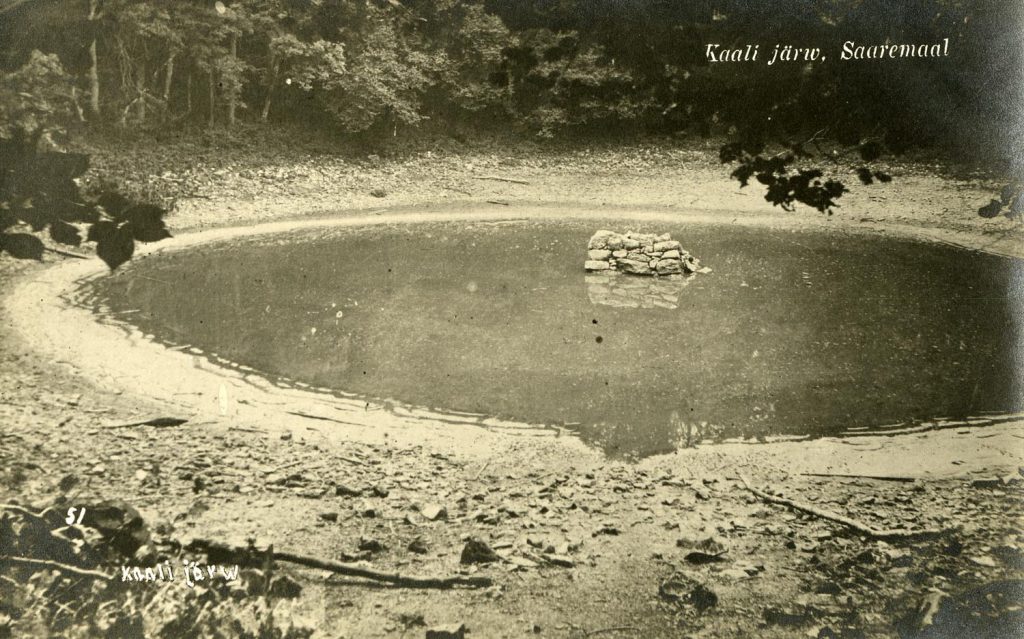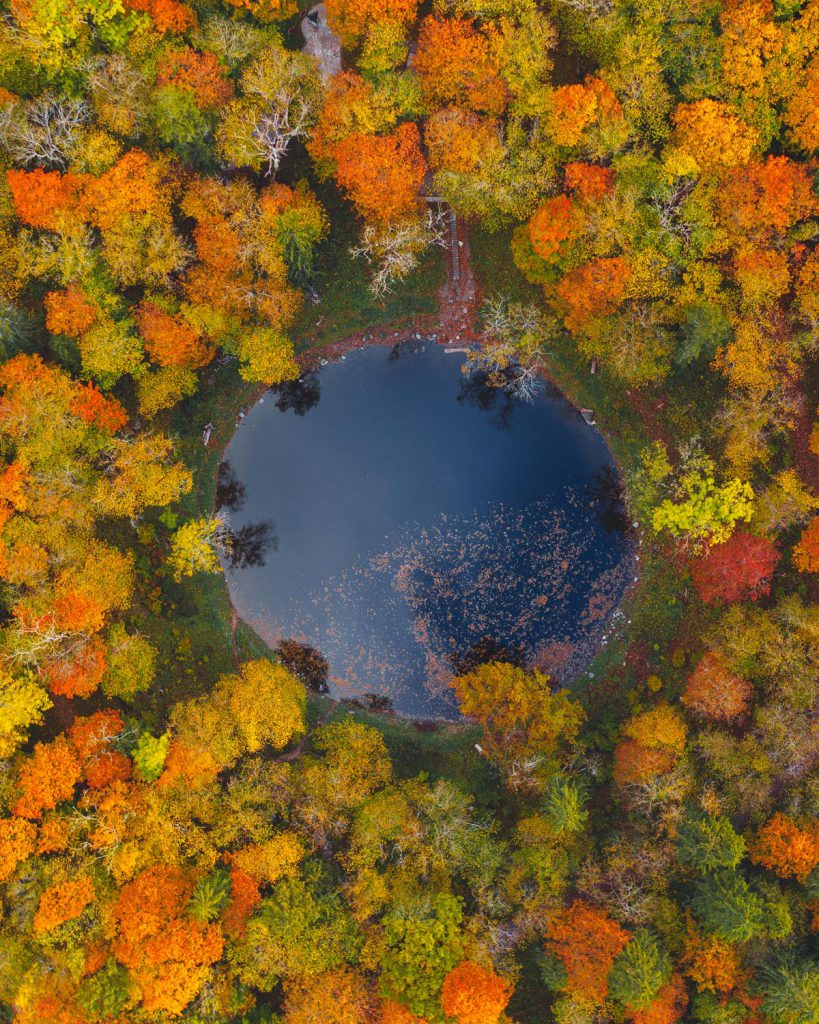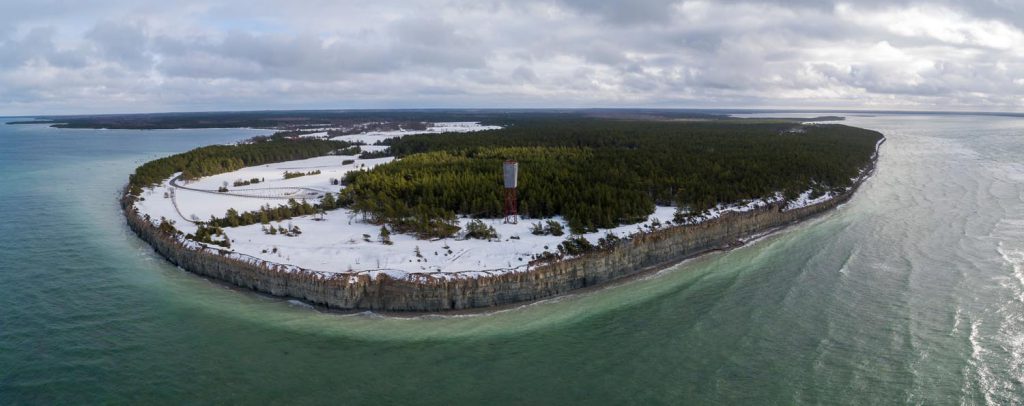Author: Maret Soorsk
From time to time, legends and tales – however we prefer to call them – have been passed on from one generation to the next. Often, legends arise as means to explain mysterious occurrences, the origins of various places such as medieval buildings, and add colour to events that took place a long time ago. Sometimes, these tales were simply told for fun and to arise excitement in listeners. There are plenty of stories like these on our islands.
Secrets within the walls of Kuressaare castle
One of the most famous is the tale about the castle’s walled-in man. It is said that when drawing the plans of the castle in 1785, a closed space was found in the eastern corner of the courtyard. After tearing down the walls, a small cellar was discovered. In the middle of the cellar was a table with an empty carafe and some breadcrumbs. Behind the table, there was a man’s skeleton sitting on a chair. After some research from several sources, an explanation for this strange scenery was found. This monstrous event took place at the beginning of the 16th century when the Protestant religious movement began to spread in Saaremaa. An inquisitor monk of Spanish origin was sent to Saaremaa at the request of the Catholic bishop of the Saare-Lääne diocese, who had to ensure order among the bishop’s subordinates who were tempted by the new religion. A beautiful girl crossed paths with the monk time and time again. Eventually, the strict monk fell in love. This contradicted the celibacy requirements of his position, which forbade all interaction with the opposite sex. Their love became apparent, and the compromised girl was sent to a convent in Kaarma. The lovesick monk was kindly offered some help. He was promised that if he wrote a letter to the girl he loved and hid it in a loaf of bread, it would be delivered to the girl. The letter, however, was enough evidence of his guilt and was instead delivered to the bishop. Once the bishop realised what his subordinate monk had done, the bishop ordered the monk to be walled in the cellar alive. A few centuries later, the skeleton had become very fragile. Before it scattered to dust, a local teacher managed to sketch it. Today, Saaremaa Museum has one undated drawing of the walled-in knight. Since the end of the 19th century, countless different postcards about the drawing have been published.
There is another version of the walled-in knight. It’s a story about a young knight who went missing after a war mission. His young fiancée decided to become a nun after receiving notice about his alleged death to pray for the peace of his soul. Years had passed when the knight who had been pronounced dead returned home. After hearing about his fiancée serving as a nun, the brave man decided to accept his sad fate. On one hot summer day, he happened to be riding his horse around the convent where she lived and saw her taking water from the well. When he went closer, the two lovers recognised each other immediately. They knew they couldn’t undo what had happened and parted ways at first, but their love was powerful and made them meet again. Eventually, they decided to escape together and sail to Sweden. However, one of the nuns saw them running away together and told the bishop’s cavalry. Unfortunately, the wind was strong that night and the ship had not been able to set sails. The cavalry arrested the couple and brought them to the castle to face trial. There, it was decided that the knight was to be walled in alive for kidnapping a nun. The nun, however, was put in a large sac and thrown across the cliff where the sea was the deepest.
There are many more tales about the castle. One tells a story about Aleksei Kaljo’s insightful dream. Aleksei Kaljo (1864–1932) worked as the castle guard at the beginning of the 20th century and then again from 1927–1932. He was a painter by profession and among other works, he designed the coat of arms of the crucifixion on the main floor of the castle and made the wall paintings as well. Once, he was taking a nap in the basement of the castle. Suddenly, he saw seven pairs of castle ladies in white robes entering through the basement window, followed by a knight with a big sword. Kaljo asked what the strangers wanted. The knight pointed to the closed door of a smaller side room right next to where they were and the procession started making their way towards it. At the last moment, Kaljo managed to ask where the bishop’s gold was. “A hundred years”, said the knight as the intruders vanished. Kaljo suddenly noticed he was standing in the middle of the basement, holding a crooked rusty nail which should have been holding the side room’s door. The diocese of Saare-Lääne was once considered a wealthy state. When the last bishop sold his bishopric and state to Denmark in 1559, he was to receive 30 000 Thalers (Prussian Currency) in return. The fate of this gold has occasionally excited some minds. Unfortunately, it is unknown in which year the painter had this dream. We will probably never know if the right time has already passed or if the great fortune is yet to be found.
The mystery of Lake Kaali
Lake Kaali, which is surrounded by Kaali Järv and a rampart of dolomite layers that have been broken apart in blocks (and at times look like they were thrown vertically) has always captivated both locals and visitors. In 1923, a local paper wrote: “There are not many places in the whole world that would offer such unique natural wonder as the shores of Lake Kaali do”. It took well over ten years before the true origin of the mysterious Lake Kaali was finally uncovered. It turns out that this somewhat odd lake lies at the bottom of a meteorite crater.



As for the myths that revolve around the lake’s origin, no matter the variations, the stories always come to the same conclusion – the lake arose after an unnatural marriage between a brother and a sister was formed.
One of the origin stories reports about a majestic castle on top of a hill, where the ruler of Saaremaa and its neighbouring islands lived. Wealthy Saaremaa lured in many conquerors. Finally, the Swedes came with a large fleet and conquered the island. In the process, the ruling couple was killed. Their two children were left behind. The younger one, a daughter who was still a nursing baby, disappeared. The son was taken and brought back to Sweden. Once he was grown up, the king sent the young man back to his home island, where he was to take his place in the castle on top of the hill. One day, when he was riding around, he met a beautiful young girl and fell in love at first sight. When he found out that the girl’s father was dead, but her mother lived in a cottage nearby, he decided to find her mother to ask for the girl’s hand in marriage. The mother was frightened when she heard about the young man’s plans. She finally shared her secret and said she was a wet nurse who had saved the baby, and that the young couple were long-lost brother and sister. However, this revelation did not prevent the young man from marrying the girl. Their wedding party was lavish like no other and was held on Midsummer Day. All of the most important people from Sweden attended. In the middle of the party, at midnight, there was a terrible big bang and the top of the mountain together with the castle disappeared from the Earth with a great roar. What was left was only a small lake between the ramparts of boulders.
Panga cliff and the gods of the sea
Panga (named after a village) or Mustjala (named after the parish) cliff has been the source of several tales. It is told that animals or people were thrown off the cliff as offerings to the gods of the sea to prevent people from drowning at sea. The place for offerings was called Mari Kakk. The sea has always roared here as if it would turn into a storm at any minute. It was as late as the 19th century when offerings were still given, but in a form of pouring beer into the sea, for the gods.
There was once a father who refused to sacrifice his child. As the last resort, he threw a sheep over the cliff and into the sea instead of his child. That way, this sinister tradition was finally broken.

There is one story about a shipwreck, in which the whole crew besides the preacher was killed. The sole survivor had a chapel built, which had a golden fish shining in the tower. He also swore that if the village people didn’t celebrate the shipwreck anniversary, the cliff would claim a victim – either an animal or a human. And so, each year a service was held on July 13th, on the anniversary of the shipwreck. After the service, a party was held. In time, the chapel was ruined and its bells were brought to Hiiumaa. The old chapel location was still remembered in the middle of the 19th century and people would continue to come here to pray, and drink vodka and liquor to the sea gods as well.
Muhu island’s unexplainable Rässa lõkits
On Muhu island, in Rässa village, an unexplainable flaming fireball – or lõkits as it is named – has bothered locals for decades. Many have seen it. Some claim it has frightened people so much that it has petrified them. No one wants to bump into it, although it is not quite clear what it does. The fireball bounces when it moves – at times it rolls along the stone hedges, at times it floats above the sea or even in the treetops. Its speed depends on the wind and it can mostly be seen in August. Only a few witnesses have spoken about autumn.
In Rässa village, there is a stone that the mysterious fireball has torn apart. Back when it happened, locals described it as if something was burning on the pasture by the sea. As they came closer, it seemed as if there was a fire on top of a huge rock that exploded. The stone fell into several pieces and the fireball suddenly vanished. This broken stone can still be found in Samba. At one point, researchers from the Estonian Academy of Sciences came to see the stone, but they never managed to see the fireball.
Nevertheless, it has not been declared paranormal – it is thought to be a unique natural occurrence. Some have thought that it is ball lightning, but that wouldn’t explain how the rock broke. There are plenty of places in the world that have unexplainable energy, the most famous of which is probably the Bermuda triangle. Although considerably smaller, Rässa village on Muhu island is thought to be one of them.
The half devil, half hero Must-Mart
In Aarne Vinkel’s 2009 article about the famous Must-Mart (black Mart – ed) published in “Keel ja Kirjandus” magazine, he claims that the hill of Must-Mart still exists on Muhu island, near to Paljaaru state forest, on the common pasture of Rootsivere and Igaküla villages. Several tales exist about the hill. One thing they all have in common is that Must-Mart was thought to be a kind of hero of the Muhu people: half-devil and half-man, who, for example, brought a huge stone here from Finland, who wanted to dig a fairway through Muhu island, and who attempted to dig a way to hell in Põri village.
According to Vinkel’s writing, the hill of Must-Mart was created after a great plague, when nearly all people and animals were wiped from Muhu. In the location of today’s Võiküla, there was still one horse that had survived the plague, and the wolves wanted to eat it. Right when the wolves were attacking the horse, a half-man half-devil happened to be there. As the wolves and the devil have been enemies since the beginning of time, a wild hunt for the half-devil began. The half-man, no other than Must-Mart, ran to Lehtmetsa village to seek shelter at the Nagivälja farm that was still untouched by the plague and jumped in the well. The master of the household called Naiu happened to witness it, called the man out of the well and offered him a better hiding place underneath his house. Must-Mart remembered his kindness and helped him out until Nagivälja became a wealthy farm.
Naiu had seven sons and two daughters. Must-Mart married one of the daughters named Maret. The wedding was grand, and guests danced so hard that the land sunk a little and water was splashed on the narrow land strip between Keinastu and Koguva. This is allegedly why there is constantly some water on Keinastu (also known as Kõinastu) islet even today.
After the wedding, Must-Mart and his wife started gathering their fortune. They gathered it until they had so much money that they had nowhere to put it. Then, they decided to bury it and cover it with a giant rock – the rock that Must-Mart brought with the help of drift ice from the cliffs of Finland. Mart’s brothers somehow found out about his treasure and wanted it for themselves. As they couldn’t move the rock, they made a fire around it in an attempt to break it into smaller, moveable pieces. There is still a huge rock at Tammiski peak called Mustkivi (black rock – ed) and who knows – maybe beneath it there is a fortune that awaits its finder.
Must-Mart has said to have had many plans and entanglements with Naiu’s children that have been the foundation of many stories. For instance, at one time, he felt like digging to hell. However, he didn’t manage to realise most of the ideas he came up with. Digging to hell was no exception. Põri village was situated on low grounds – the watery meadow still exists on the Saaremaa’s side of the strait, as well as the dirt that Mart threw in the process of digging, which is now known as Kuradimäe (the Devil’s hill – ed). The tales of Must-Mart are just tales, but when travelling around the island and stumbling upon certain places, it might be fun to remember them.